Graham Reid | | 12 min read

Every month dozens of reissues across many genres – sometimes well annotated compilations, often reissued albums in replicas of the original artwork – appear. These days you can find obscure rural blues and Sixties psychedelic albums, the complete works of some folk singer who is barely a footnote in a reference book and much more without too much difficulty.
But if there is one genre conspicuous by its absence it is American free jazz from the late Sixties and early Seventies.
The reasons for this are multiple and interlocked: Often the artists were on small and short-lived labels and the pressing run was only a few hundred copies; the music was locked in its era of protest and specific causes (just how well do Vietnam and Attica translate today?) and they sold so little in their own time that it would be a courageous or foolish person who would try to arouse interest in a reissue now.
Also few of the musicians are around today to speak about the music and the times. Any reissue comes without anyone to promote it by way of interview.
Oh, and it was mostly very black, very political and often Afrocentric at the time of the Black Panthers and riots in the streets.
Maybe – even in these days when Black Lives Matter – that is just too tough a call for any reissue let alone trying to fathom who the audience might be.
By luck and chance, I happen to have quite a few such albums, many of them picked up out of Real Groovy when they had a store at the top of Mt Eden Rd in Auckland about three decades ago.
Shortly after they set up shop I went there and, just inside the door, were the jazz bins. And it was clear they had bought someone’s collection or taken a shipment from the States . . . and really didn’t know what they had.
The albums were often rare, some of the names utterly unfamiliar and the price being asked ludicrously low. I was broke at the time, but never so broke I would let many of these go by.
Over a period of a few months I slipped in and bought up as many as I could afford, so I may well be the only person in the country with the first three albums by the Revolutionary Ensemble, albums by the likes of the Ensemble Muntu and Roscoe Mitchell’s rare double album L-R-G/The Maze/S II Examples.
And more.
Rather than drag out the utterly obscure (aside from one or two) I’ve here pulled some off the shelves which may just be available through places like Discogs and – in much the same manner as previous articles on 10 Shameful Records I’m Proud to Own (and then 10 more and more again!), 10 Good Albums in Bad Covers and so on – offer potted descriptions of them.
A couple have been reissued on CD if you trawl the internet – Julius Hemphill’s superb Dogon AD for example – but as for the rest . . .
Here is a journey back in time and space . . .
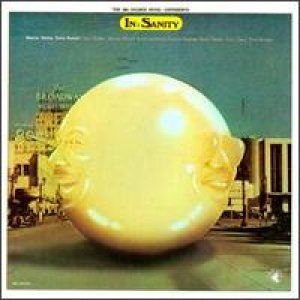 The 360 Degree Music Experience:
In:Sanity (Black Saint, 1976)
The 360 Degree Music Experience:
In:Sanity (Black Saint, 1976)
A veritable supergroup of free jazz stars under the direction of drummer Beaver Harris and keyboard player Dave Burrell, but some of this isn't actually free jazz despite the presence of bassist Cecil McBee, saxophonist Hamiet Bluiett and others of the genre. The opener Tradewinds for example is a delightfully light Burrell tune with soloist Azar Lawrence (saxophonist in McCoy Tyner's band) taking the breezy melody over congas and with Keith Mark's flute and Francis Hayes' steel drums bringing a positively tropical flavour. Thereafter however are pieces which are more open – the side-long Complete Operation with Sunil Garg on sitar – but because most of this is melodic and even structured, In:Sanity might be your easiest introduction to the world of free jazz over all the others mentioned here.
It is on Spotify but the gatefold vinyl has interesting and useful explanatory notes. For that you need to go to a site like discogs.com
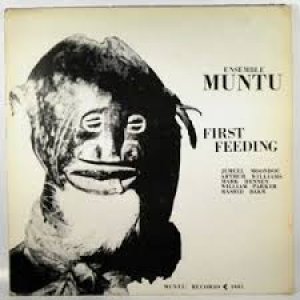 Ensemble Muntu: First Feeding
(Muntu, 1977)
Ensemble Muntu: First Feeding
(Muntu, 1977)
This is go-to album for anyone who thinks free jazz is just the cacophonous result of a bunch of people all playing different things at the same time. Ensemble Muntu work together as much as off each other.
Dedicated to the guiding spirits of fellow travellers Cecil Taylor, Sam Rivers, Jimmy Lyons, Andrew Cyrille (see below), Rachid Ali and others, the five-piece here are saxophonist/leader Jemeel Moondoc who wrote the three pieces, trumpeter Arthur Williams, drummer Rashid Bakr, pianist Mark Hennen (the only white guy in the group) and William Parker on cello and bass.
Hennen brings something between the midpoint of strident or Romantic classical playing and Cecil Taylor's punishing style (with whom he'd studied), and Moondoc and Williams show an intuitive understanding of each other as they converge then pull apart.
There is a real discipline at work here, especially when Moondoc and Williams bring martial sounds to the title track and a real pathos and yearning on the closing passages of the 14-minute Flight across the top of turbulent (and yes, the conflicting sounds) of Hennen, Bakr and Parker's astringent bass.
None of the albums here would be “easy” but even the 20-minute Theme For Milford which takes up the second side of this album has passages of real and engaging beauty . . . before things get “difficult”.
There is an excellent article about Moondoc/Muntu here and a few of his albums are on Spotify (but nothing by Ensemble Muntu).
 Revolutionary Ensemble: Vietnam
(ESP/Base Records, 1972)
Revolutionary Ensemble: Vietnam
(ESP/Base Records, 1972)
The trio of violinist Leroy Jenkins, bassist Sirone and percussion player Jerome Cooper (all of whom released solo albums or led other ensembles, many of which I have) are the real deal in the fee jazz world of the Seventies.
Some of their more recent albums – they re-formed in 2004 and recorded again before Jenkins' death in 2007 – are on Spotify but it is the first three – this one, Manhattan Cycles and The People's Republic – which capture them at their peak.
This debut recorded at the Peace Church in Greenwich Village looks like two parts of the same piece entitled Vietnam, but in fact it is the same piece in different treatments. The first occupies a side and a half, and on the other half of the second side it gets an even more emotionally intense and taut treatment with searing violin and deep, zig-zag bass digging in and driving each other while Cooper provides some explosive percussion.
Just as Jimi Hendrix's treatment of The Star Spangled Banner conjured up horrifying images of Vietnam under the pall of napalm and bombs dropped from invisible planes above, at times this short version of the title piece evokes something just as dark . . . but more in the nature of a dislocating fire-fight by night experienced in a foxhole or under an oppressive jungle canopy.
This album is available direct from ESP-DISK as modestly priced download, those other two early ones are at Discogs.
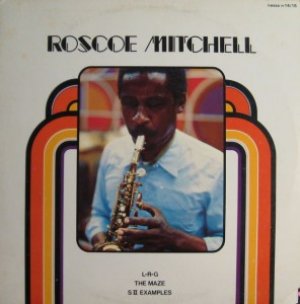 Roscoe Mitchell: L-R-G/The
Maze/S II Examples (Nessa, 1978)
Roscoe Mitchell: L-R-G/The
Maze/S II Examples (Nessa, 1978)
If you could blow down it then Mitchell was The Man to do it. One of the most important figures in jazz history, Chicago-born Mitchell was a co-founder of the AACM (Association for the Advancement of Creative Musicians) and the terrific Art Ensemble of Chicago who took free jazz and improvisation from Ellington into the future and back to Africa.
This double album – recorded after more than a decade with the AEC and other projects – is like a sonic exploration of the diverse sounds the instruments (16 wind and brass on the first record) with eight people playing percussion (including himself, Henry Threadgill, Joseph Jarman, Malachi Favors, Anthony Braxton, Don Moye and Leo Smith) on the 21-minute The Maze . . . and then his own side-long solo soprano sax piece (using his specially made curved instrument) which is a headphone treat and such a gentle ride of emotions it is very close to ambient music.
It's an album of AEC players – Moye, Jarman, Favors at that time – plus like-minded fellows (Braxton, Threadgill, Douglas Ewart, George Lewis, Thurman Baker) just stretching into new areas on pieces which Mitchell prepared scrupulously in advance . . . and it sounds like it. It is free but constructed.
Terrific double album, the summation of much he had done to that point but also a stand-alone item in his vast catalogue. Unfortunately not on Spotify among the dozen or so Mitchell albums, but it is on Discogs (as is the equally recommended double album Nonaah by Mitchell and some of the same players from the previous year).
 Julius Hemphill: Dogon AD (Arista,
1972)
Julius Hemphill: Dogon AD (Arista,
1972)
As with Roscoe Mitchell, Julius Hemphill – who died in '95 aged just 57 – was in the vanguard of free jazz and exploratory saxophone.
Out of Fort Worth, Texas (like Ornette Coleman) he co-founded the BAG (Black Artist's Group, people were big on founding organisations of similarly minded people back then) in St Louis where this was recorded, played with Ike Turner in a number of bands, and moved to New York in the mid Seventies where he founded the wonderful World Saxophone Quartet, which at various times included Hemphill, Oliver Lake, David Murray, Sam Rivers, Arthur Blythe, Hamiet Bluiett . . .
This is an exceptional album although some would – with some justification – argue that it isn't “free jazz” because Hemphill's vision was so clear and contained that it seems entirely notated. But his ideas were open for the other players and this – originally released on his own Mbari label and picked up by Arista's Freedom imprint – connects with gospel, blues and other African-American roots.
But also – as the title indicates – was the result of his reading about the mysterious Dogon people of Mali whose understanding of deep cosmology meant they knew of the existence of certain planets and solar systems before NASA. That idea of mystery, tribal magic, deep meditation on the universe (the second side) and facets of life (celebration) and death (furious funereal music on Rites) inform this extraordinary album.
The other players alongside Hemphill's alto and flute are Abdul Wadud on cello, Philip Wilson (drums) and Baikida Carroll on trumpet.
A tip, start with side two for an evening of taking you in and into this album, then flip the record for something more out there . . . and by Rites it will be getting you very far out and “Oh man, faaar-out”.
Not on Spotify but yes on Discogs.
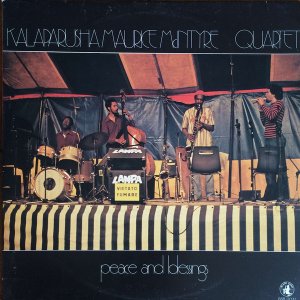 Kalaparusha Maurice McIntyre
Quartet: Peace and Blessings (Black Saint, 1979)
Kalaparusha Maurice McIntyre
Quartet: Peace and Blessings (Black Saint, 1979)
It's a commonplace today for people – especially young musicians coming into the game – to acclaim Sun Ra, sometimes just for his out-there persona (the Lee Scratch Perry of “free jazz”?) more than his music.
But this album – on Spotify and available on actual record through Discogs – is as interesting, equally rewarding and even sometimes more excitingly earthbound than Ra's cosmic vision.
If Ra (and this a gross generalisation) appeals because of his cosmic consciousness, then multi-instrumentalist Kalaparusha Maurice McIntyre (here on anything you can blow down including Indian shenai – shades of Mitchell above – as well drums and bells) is someone to drop everything for.
The quartet here – recorded live in a studio in Milan – are multi-blower Longineu Parsons (trumpet, flugel, flute, sopranino etc), bassist Leonard Jones and drummer King L Mock. And they bridge that divide between the grit of innercity urban life and the Indo-influenced cosmic conscious beyond.
It needs to be explained, of course, that at this time there had been a decade of Black Power politics and revolutionary activity which had failed black communities, that a significant number of black artists had peeled off to embrace Afro-Asian consciousness, and that if you were a musician the possibilities of improvised classical Indian music held out musical (if not spiritual) possibilities.
So here McIntyre (one of the founder members of the AACM) looked into the world beyond.
But for his own health far too far . . .
He spent a long time on the streets and subways in NYC and . . .
He died only five years ago at age 77, but by then his story was in the distant past. He did however leave this excellent album – the extended post-big band/Ellington-cum-Ornette pieces on side two are exciting -- and his life gets a good notice in this obituary.
On this album (on Spotify) the long past of black American jazz is right there as part of whatever moment the players are in, and whatever future might beckon . . .
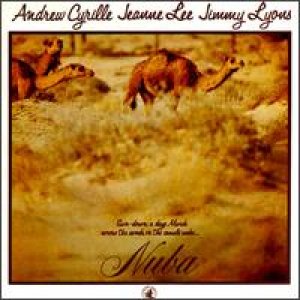 Andrew Cyrille, Jeanne Lee, Jimmy
Lyons: Nuba (Black Saint, 1979)
Andrew Cyrille, Jeanne Lee, Jimmy
Lyons: Nuba (Black Saint, 1979)
Drummer Cyrille – who plays a bewildering array of equipment and also thumb piano – leads these sessions in Milan with vocalist/poet Jeanne Lee and altoist Jimmy Lyons (also from the Cecil Taylor Unit like Cyrille).
Lee is a fascinating figure and in her long career was on the edge of the Fluxus Movement, performed on Carla Bley's terrific if slightly confusing Escalator Over the Hill (more on that blockbuster some day) and recorded with Archie Shepp, Braxton, Enrico Rava, Bob Moses, her husband Gunter Hampel and many others. Her voice is mixed back on these recording which are dominated by the often busy playing of Lyons who brings a hard bop tone and sometimes lengthy melodic lines (check Nuba 2) to proceedings.
It is on Spotify and – given there are no liner notes of any value, just a couple of Lee's handwritten poems – there's no real need to search Discogs for a copy.
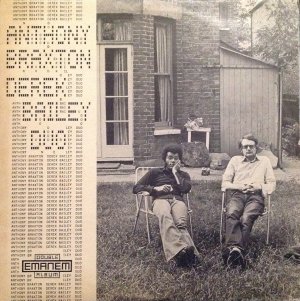 Anthony Braxton and Derek Bailey:
Live at Wigmor (Inner City, 1974)
Anthony Braxton and Derek Bailey:
Live at Wigmor (Inner City, 1974)
This double album is most commonly billed as The First Duo Concert and this first cover reproduced here not the one I have (that image appears on the inner gatefold sleeve, see below).
Bailey's abstract guitar sonics (acoustic and electric) are disconcerting and sometimes quite disorientating beside Braxton's melodic playing on flute, clarinets and saxophones.
These two could not have come from more different positions – look at how they appear in that first photo – but the common ground they found was in place between notation and free playing and they had played together previously so knew each other's styles.
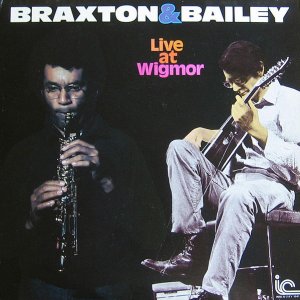 They established ideas
(“areas”) around various motifs but also left room for complete
freedom, and in each set Bailey and Braxton had a solo spot.
They established ideas
(“areas”) around various motifs but also left room for complete
freedom, and in each set Bailey and Braxton had a solo spot.
For a couple of areas Bailey pulled out his 19-string guitar. Across these two records – with some rehearsal extracts after each set in the vinyl version – this actually makes good sense as they keenly shift into areas based around small ideas or or approaches.
Area 2 for example is about stabbing and staccato sounds so perhaps not the best place to drop the needle first time up.
Not among the dozens of Braxton albums on Spotify (although their later Moment Precieux is) but copies are at Discogs under Live at Wigmor.
The CD version doesn't have the two rehearsal extracts.
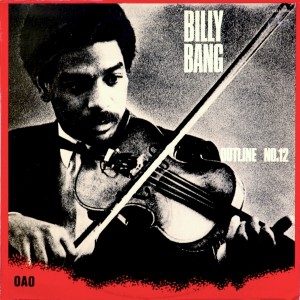 Billy Bang: Outline No 12
(Celluloid, 1983)
Billy Bang: Outline No 12
(Celluloid, 1983)
If anyone was entitled to make an album called Vietnam; The Aftermath in '04 it was former draftee Billy Bang who after the war joined the political underground.
Largely self-taught, he became one of the preeminent violinists in the free jazz world alongside Leroy Jenkins (of the Revolutionary Ensemble) with whom he studied. He performed with Sam Rivers and later he join Sun Ra's band and also found the String Trio of New York as well as playing with drummer Ronald Shannon Jackson, guitarist James Blood Ulmer and bassist/producer Bill Laswell.
In his own style, Bang – real name William Walker – can sound much like a classical player off his meds, but he walked between the avant-garde and notated music with aplomb. This album has him with two other violinists, saxophonist Frank Lowe, bassist Wilber Morris, three clarinet players (David Murray on one), Khan Jamal on vibes and two percussionists (Sunny Murray being one).
Most of this is written but Bang creates such odd arrangements, collisions, space and tones that it sounds – especially the side-long Conception – like free playing by musicians with a keen ear for each other. He's perhaps not wrong when he describes the piece Seeing Together as taking us through “a land of controlled folly”. The title piece alludes to cotton field hollers and work songs.
Albums in Bang's vast catalogue – he died in 2011 – are always a pleasure to discover.
This is on Spotify along with a dozen other albums under his own name.
 Music Revelation Ensemble: No Wave
(1980)
Music Revelation Ensemble: No Wave
(1980)
And this is where free jazz runs into New York rock and funk.
Lead by guitarist James Blood Ulmer, this debut for his Ensemble included saxophonist Davis Murray, electric bassist Amin Ali and drummer Ronald Shannon Jackson (other players would come and go over the next decade or so). Ulmer's stuttering, stabbing and jagged-edge playing tends to eschew the traditional sounds and role of guitar, and it's little wonder he would soon earn the title as the Jimi of Free Jazz and find himself described in terms of Ornette Coleman's harmolodics.
Labels didn't know what to do with him (he has been on Columbia, Blue Note, DIW and others) but if his style appeals you tend to follow him wherever he goes. Here is with utterly sympathetic characters, all of whom had done hard yards in post-bop and free jazz.
This is the funky, Jimi-rock end of free playing and is often quite contained. Not on Spotify but copies available through Discogs.
And some time soon we will dig into free jazz out of the old Soviet Union. That's tough stuff.

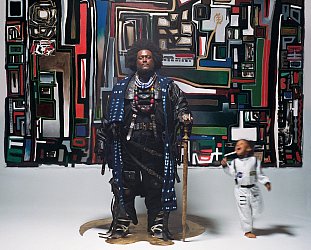

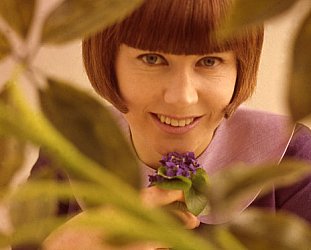

post a comment